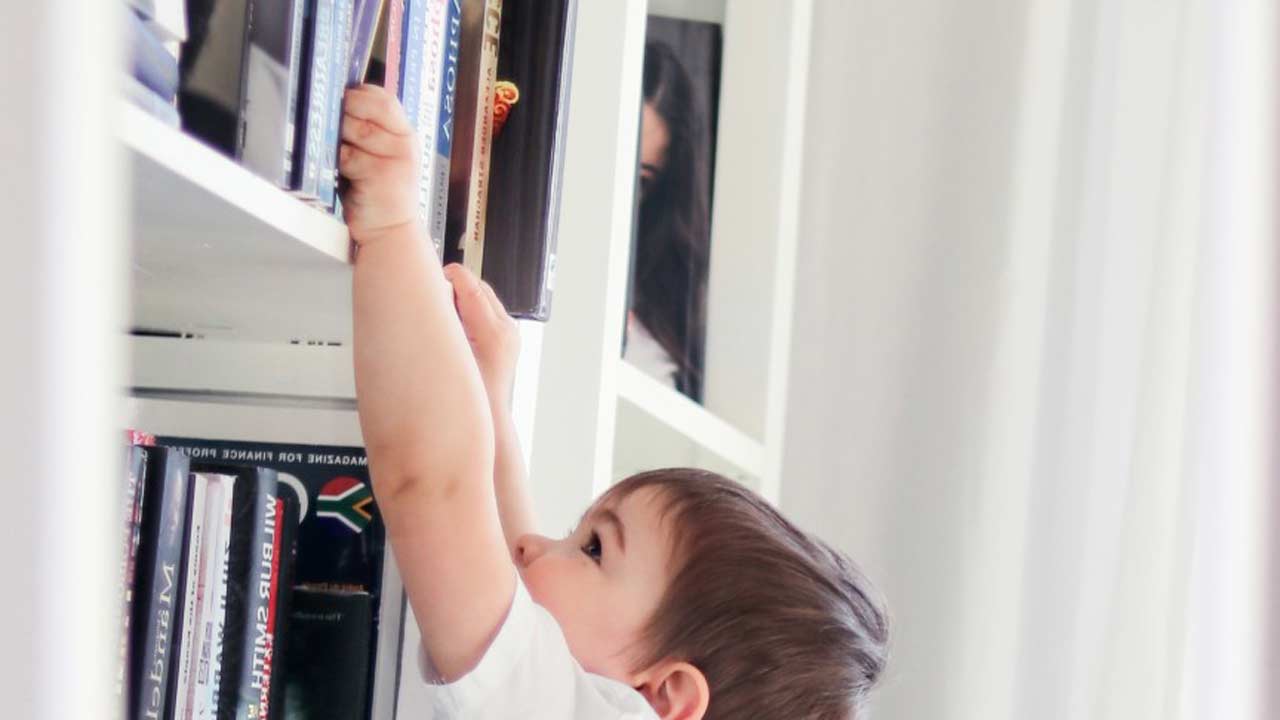Add Childproofing Your Home to Your New Baby To-do List

One of the biggest items on your new baby to-do-list should be childproofing and finding hidden hazards in your home. Curious babies and toddlers can get into a lot of trouble exploring their new world and surroundings. Parents need to be extra vigilant. In less than 5 minutes, an unsupervised child can get in serious trouble. Every parent needs to be aware of child safety, and this begins in the home.
View From Your Child’s Perspective
Spend time viewing your home from a child’s level. Secure shelving and any furniture that has potential to fall on your child. Use bumpers or safety padding on all sharp furniture edges and corners. Move any small objects that can be swallowed. Check toys for appropriate age guidelines, small pieces and batteries. Most common houseplants are safe, but to avoid choking or potential toxicity, keep them out of reach of young children. Never leave your child alone in or near any kind of water. Don’t answer the door or phone or attend to other children without taking your baby with you or draining the tub.
Start With Your Child’s Room
Children’s rooms are the best place to start childproofing. According to child-safety experts, the typical focal points for decorating a child’s room — windows, cribs and bedding — also hold the greatest potential danger to a child’s safety. Never place a crib, playpen, bed or any type of low-standing furniture near a window. Dangling or accessible cords on window coverings can pose an accidental strangulation hazard to infants and young children.
Don’t Forget Window Cords
Our friends at The Window Covering Safety Council have put together this important Childproofing Checklist. They would like to call attention to window cord safety and ensure that homes with young children are only using cordless window coverings or those without accessible cords. Older corded window coverings may have looped pull cords or accessible inner cords that could pose a strangulation risk to small children. In addition, tasseled pull cords need to be as short as possible so they are well out of the reach of children.This a precaution that should be taken in all homes where young children are present, including grandparents’ or a caretakers’ homes. If you can’t replace your corded window coverings, you can order free cord-retrofit kits from WCSC via an on-line order form and its toll-free number at 1-800-506-4636. Their website windowcoverings.org also contains a wealth of useful safety information for parents and caregivers.

About Window Covering Safety Council: The Window Covering Safety Council (WCSC) is a coalition of major U.S. manufacturers, importers and retailers of window coverings dedicated to educating consumers about window cord safety. WCSC urges parents and caregivers to check their corded window coverings for potential cord hazards and to retrofit or replace them with today’s safer products.
Government safety officials and the WCSC recommend that only cordless window treatments be used in homes with infants and young children. Safer window covering products can easily be identified by the Best for Kids™ certified label. In order to be eligible for the Best for Kids™ certification, manufacturers must meet the specified program criteria—the window covering must either have no cords or the inner cords cannot be accessible, as defined by the industry’s safety standard— and submit their window covering products to a designated third party testing laboratory.
Visit windowcoverings.org: a comprehensive resource that includes cord safety information and illustrated how-to features, online ordering of free retrofit safety kits, safety-related articles, design and safety tips, and links to other child-safety websites.




